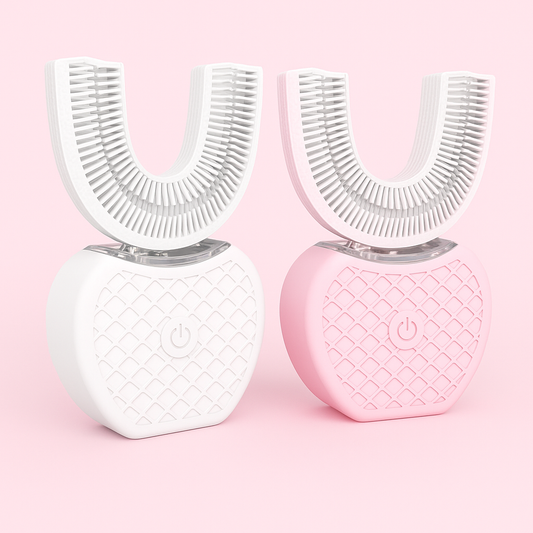Introduction
In the pursuit of a radiant smile, many individuals turn to whitening toothpaste as a convenient solution. But how does this product actually work? Understanding the science behind whitening toothpaste can help you make informed choices for your oral care routine. In this comprehensive guide, we will delve into the various ingredients, mechanisms, and best practices that contribute to achieving a brighter smile in 2025.
The Importance of a Bright Smile
A bright smile is often associated with health, confidence, and attractiveness. Research has shown that people with whiter teeth are perceived as more successful and friendly. In 2025, the emphasis on personal appearance continues to grow, making effective oral care more important than ever.
Understanding the Ingredients
Whitening toothpaste contains a variety of ingredients that work together to remove stains and brighten teeth. Here are some of the most common components:
- Hydrogen Peroxide: This potent bleaching agent penetrates the tooth enamel, breaking down stains and lightening discoloration. It is commonly found in higher concentrations in professional treatments but is effective in lower concentrations in toothpaste.
- Carbamide Peroxide: A compound that breaks down into hydrogen peroxide in the mouth. It is often used in whitening gels and toothpaste for its gradual whitening effect.
- Silica: A mild abrasive that helps to scrub away surface stains such as those caused by coffee and tea. Silica is gentle on enamel and helps maintain its integrity.
- Fluoride: In addition to its well-known cavity-fighting properties, fluoride strengthens tooth enamel, making it more resistant to staining and decay.
- Whitening Agents: Some whitening toothpastes contain specialized enzymes or polishing agents that help to break down stains and enhance the overall brightness of teeth.
- Flavoring Agents: These are added to improve the taste of the toothpaste, making the whitening experience more pleasant.
How Whitening Toothpaste Works
The mechanism behind whitening toothpaste is multifaceted, involving several processes that target different types of stains. Let's break it down:
- Stain Penetration: The active ingredients, particularly hydrogen peroxide, work by penetrating the enamel and dentin layers of the teeth, reaching deeper stains that regular brushing might not remove.
- Stain Removal: The abrasive agents, like silica, polish the surface of the teeth. By removing surface stains, they enhance the brightness of the teeth while being gentle enough to avoid damaging the enamel.
- Enamel Protection: Fluoride not only strengthens teeth but also helps to remineralize enamel, making it less susceptible to new stains and decay.
- Ongoing Maintenance: Regular use of whitening toothpaste can help maintain the results of professional whitening treatments and prevent further staining.
Choosing the Right Whitening Toothpaste
With a plethora of options available, selecting the right whitening toothpaste can be daunting. Here are some key factors to consider:
- ADA Seal of Acceptance: Look for products that have been approved by the American Dental Association (ADA). This seal indicates that the toothpaste has been tested for safety and effectiveness.
- Personal Needs: Consider your unique dental needs, such as sensitivity. Many brands offer formulations specifically designed for sensitive teeth, which can help mitigate discomfort while still providing whitening benefits.
- Ingredient Awareness: Familiarize yourself with the active ingredients in the toothpaste. If you have concerns about certain chemicals or allergens, choose products with natural or organic ingredients.
- Brand Reputation: Research brands that are well-known for their oral care products. Look for reviews and testimonials to gauge the effectiveness of the toothpaste.
- Price vs. Value: While some whitening toothpastes can be expensive, consider the value they provide. Sometimes, investing in a higher-quality product can lead to better results.
Tips for Achieving a Brighter Smile
Using whitening toothpaste is just one component of achieving a bright smile. Here are additional tips to enhance your oral care routine:
- Regular Dental Check-ups: Schedule routine visits to your dentist for cleanings and check-ups. Professional cleanings can remove tartar and stains that toothbrushes cannot.
- Limit Staining Foods and Drinks: Reduce consumption of coffee, red wine, tea, and dark berries, which can stain teeth over time. If you do consume these items, rinse your mouth with water afterward to minimize staining.
- Practice Good Oral Hygiene: Brush at least twice a day and floss daily. Consider using an electric toothbrush, which can be more effective in removing plaque and stains.
- Stay Hydrated: Drinking plenty of water not only helps with overall health but also aids in rinsing away food particles and acids that can contribute to staining.
- Use a Straw: When consuming beverages that are prone to stain teeth, such as soda or coffee, consider using a straw. This helps limit contact with your teeth.
- Consider Professional Whitening: If you're looking for more dramatic results, consult your dentist about professional whitening treatments that may be more effective than over-the-counter options.
Common Misconceptions About Whitening Toothpaste
There are several misconceptions surrounding whitening toothpaste that can lead to confusion. Here are a few clarifications:
- Whitening Toothpaste Replaces Professional Treatments: While whitening toothpaste can help, it is not a substitute for in-office whitening treatments, which typically yield quicker and more noticeable results.
- All Whitening Toothpastes Are the Same: Not all whitening toothpastes are created equal. Different formulations can have varying levels of effectiveness based on their ingredients.
- Whitening Toothpaste Can Damage Enamel: When used correctly, whitening toothpaste is safe for enamel. However, excessive use or selecting a product with harsh abrasives can lead to enamel erosion.
Conclusion
As we move through 2025, the desire for a brighter smile remains a priority for many. Whitening toothpaste can be an effective tool in your oral care arsenal, but understanding the science behind it is crucial for maximizing results. By choosing the right product, maintaining good oral hygiene practices, and consulting with your dentist, you can achieve and maintain a stunning smile. Remember, consistency and education are key components in your journey to a whiter, healthier smile.


